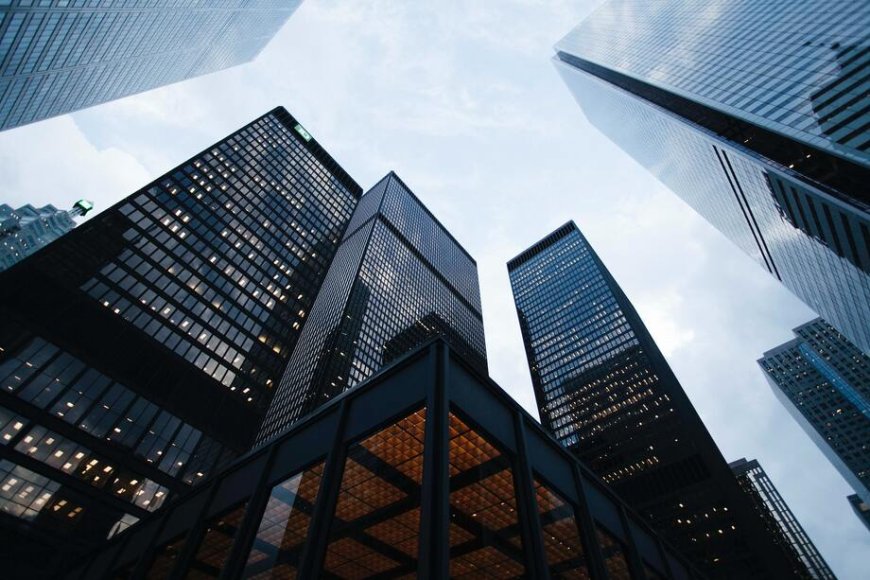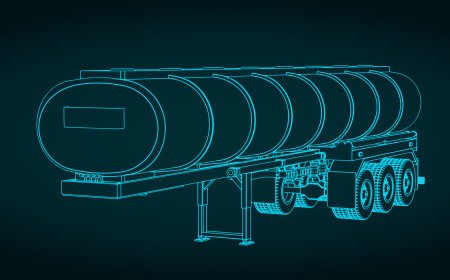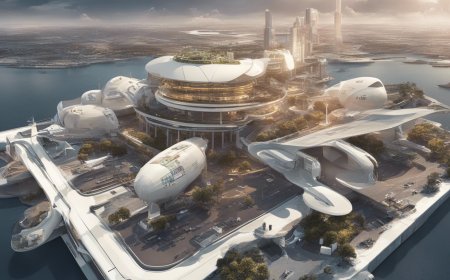How Skyscrapers Stay Standing: Exploring the Engineering Principles and Materials Science that Enable the Construction of Tall Buildings
Discover the fascinating engineering principles and materials science innovations that allow skyscrapers to stand tall and withstand the test of time, gravity, and natural forces.

Introduction
Skyscrapers, the towering giants of the urban landscape, have always captivated human imagination. These awe-inspiring structures not only redefine the skyline, but they also demonstrate the incredible feats of engineering and materials science that make them possible. In this article, we delve into the fascinating world of skyscrapers, exploring the principles that keep them standing and the materials that make them strong and resilient.
The Foundations: Structural Design and Engineering
The secret to constructing skyscrapers begins with a sound structural design. Engineers and architects collaborate to create plans that incorporate several critical components to ensure a stable and safe building. These components include:
-
A strong foundation: Skyscrapers require deep and robust foundations to support their immense weight. Engineers must carefully consider the soil and rock conditions of the construction site to design an appropriate foundation. Pile foundations, which involve driving long steel or concrete columns deep into the ground, are commonly used to ensure stability.
-
Load distribution: The building's structural framework is designed to distribute its weight evenly across the foundation. Steel or reinforced concrete columns and beams create a rigid grid-like structure, transferring loads from the floors and walls to the foundation. This grid is also known as the building's skeleton.
Engineering Principles: The Role of Structural Systems
A skyscraper's structural system is responsible for maintaining its integrity and stability. Several engineering principles come into play, including:
-
Compression and Tension: Skyscrapers must withstand enormous compressive forces resulting from their immense weight. Simultaneously, they must also resist tension, which occurs when a building is subjected to lateral forces, such as wind.
-
Shear and Bending: In addition to compression and tension, skyscrapers experience shear (forces that cause sections of the building to slide past one another) and bending (forces that cause the building to bend or deflect). Engineers design skyscrapers to resist these forces through the use of robust structural elements and systems.
Structural Systems: The Backbone of Skyscrapers
Various structural systems are employed in skyscraper construction, including:
-
Rigid Frame: A rigid frame system comprises vertical columns and horizontal beams that are rigidly connected to create a stable structure. This system provides excellent resistance to both vertical and horizontal forces.
-
Braced Frame: Braced frames utilize diagonal members to create a stable, triangulated structure. These braces help transfer lateral loads to the foundation and provide additional stability to the building.
-
Tube System: The tube system, often used in modern skyscrapers, consists of closely spaced columns connected by deep spandrel beams, forming a rigid "tube" around the building's perimeter. This system provides excellent resistance to lateral forces, such as wind and earthquakes.
Wind Resistance and Earthquake Resilience
Tall buildings must also withstand the forces of nature, including wind and earthquakes. Here's how engineers design skyscrapers to resist these challenges:
-
Wind resistance: The taller a building, the more wind force it experiences. Engineers must consider the effects of wind on the structure and design it accordingly. Aerodynamic features, such as tapered or rounded shapes, can reduce wind resistance. Buildings may also incorporate a "tuned mass damper," a large counterweight that moves in the opposite direction of the wind-induced sway, stabilizing the structure.
-
Earthquake resilience: In regions prone to earthquakes, engineers must design skyscrapers to withstand seismic forces. This involves creating a flexible yet strong structural framework that can absorb and dissipate energy from an earthquake. Base isolation systems can also help mitigate the impact of ground shaking by allowing the building to move independently of its foundation.
Innovative Materials and Technologies
The evolution of materials science has played a significant role in the construction of taller and more durable skyscrapers. Some of the innovative materials and technologies used in modern tall buildings include:
-
High-strength steel: Steel is a popular choice for skyscraper construction due to its strength and ability to be shaped as needed. Advancements in steel production have led to the development of high-strength steel, which can support greater loads while using less material.
-
Reinforced concrete: Concrete is another common material used in skyscraper construction. Reinforcing concrete with steel bars, known as rebar, increases its strength and resistance to bending, allowing for the construction of taller and more slender buildings.
-
Composite materials: Composite materials combine the best qualities of two or more materials, resulting in a final product with superior strength, durability, and resistance to environmental factors. For example, carbon fiber-reinforced polymers (CFRP) are lightweight yet incredibly strong, making them an ideal choice for use in skyscraper construction.
Conclusion
The construction of skyscrapers is a complex and fascinating process that relies on a combination of engineering principles, materials science innovations, and careful consideration of environmental factors. Through the strategic use of structural design, wind resistance and earthquake resilience measures, and innovative materials, these towering structures can stand tall and safely withstand the test of time, gravity, and natural forces. As we continue to push the boundaries of what is possible in architecture and engineering, the skyscrapers of the future will undoubtedly continue to amaze and inspire.
Disclaimer: The image(s) featured in this article are for illustrative purposes only and may not directly depict the specific concepts, situations, or individuals discussed in the content. Their purpose is to enhance the reader's understanding and visual experience. Please do not interpret the images as literal representations of the topics addressed.
What's Your Reaction?












































































































